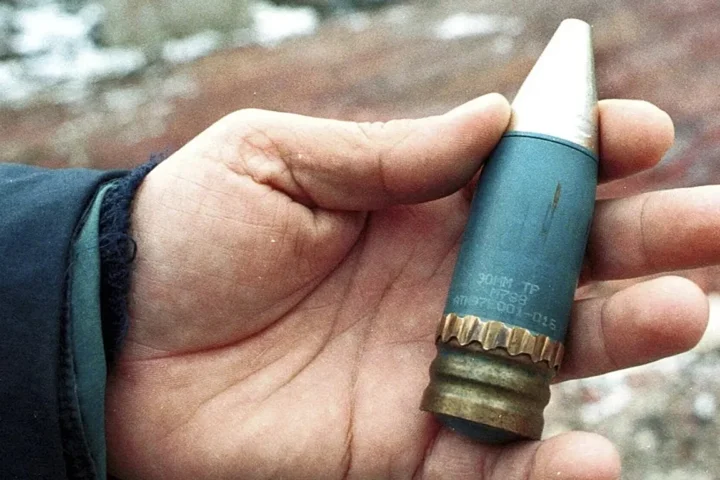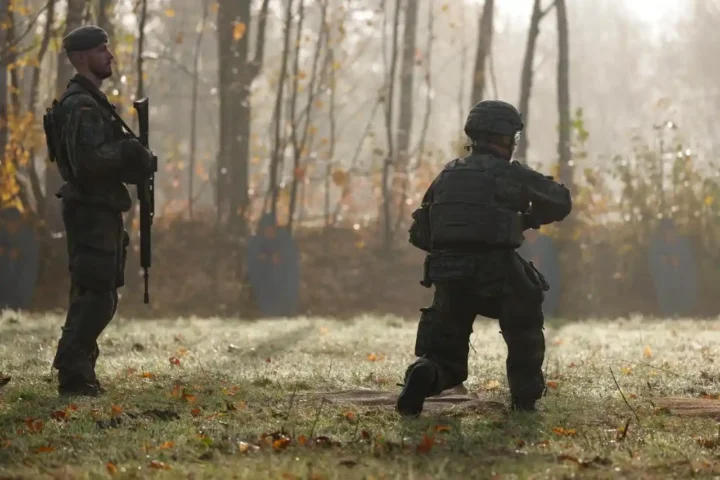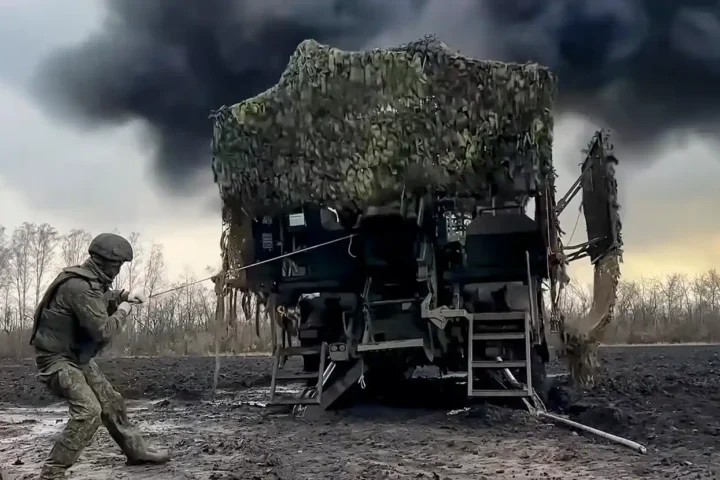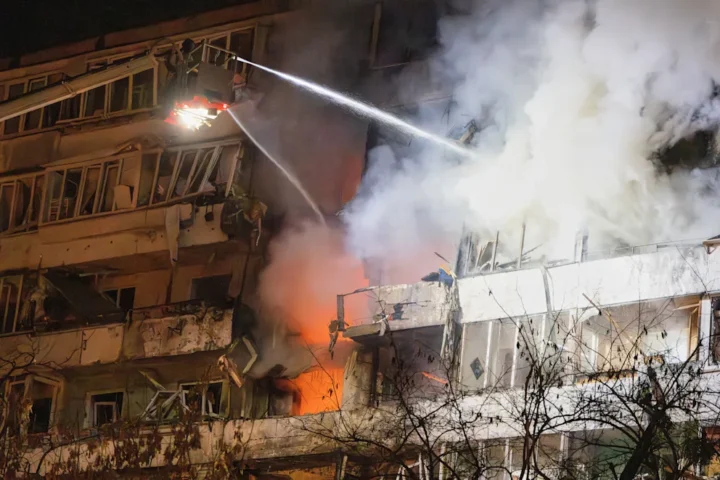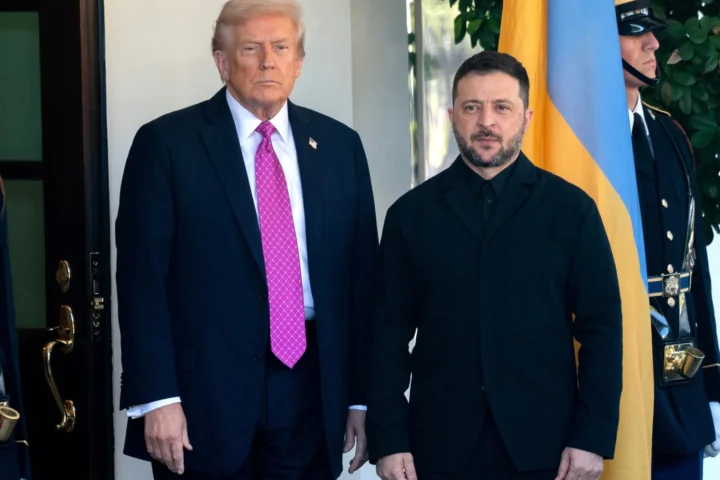Russia has intensified its attacks on Ukraine’s military recruitment infrastructure, deliberately striking draft offices in what Kyiv describes as a coordinated effort to destabilize the country’s mobilization system amid a protracted war.
According to The Financial Times, Russian long-range drones have hit at least five draft offices across Ukraine over the past two weeks. These strikes are seen as an attempt to undermine Ukraine’s ability to replenish its armed forces at a time when every soldier counts.
The latest wave of strikes reached an unprecedented scale: on one night alone, Russia launched 728 drones and 13 missiles across Ukraine, targeting the western city of Lutsk and several other regions. This assault involved 189 more drones than during the previous record-breaking attack just five days earlier.
“This is a telling attack — and it comes precisely at a time when so many efforts have been made to achieve peace, to establish a ceasefire. And yet only Russia continues to rebuff them all,” Ukrainian President Volodymyr Zelenskyy said on X.
Precision strikes on conscription centers
Russian forces have focused particularly on disrupting Ukraine’s mobilization infrastructure. On July 1, Iranian-designed drones struck buildings housing draft offices in Kharkiv and Zaporizhzhia, injuring over 70 people, according to military and city officials.
Earlier, similar strikes had been reported in Kryvyi Rih (June 30), Poltava (July 3), and Kremenchuk (Sunday). Footage recorded by local residents in Poltava and Kharkiv showed drones diving towards their targets in broad daylight — one after another — highlighting the immense pressure on Ukraine’s air defenses.
“These strikes are an attempt to disrupt the mobilization process in Ukraine,” said Vitaly Sarantsev, spokesperson for Ukraine’s ground forces. He added that such attacks are likely to continue.
Draft offices — vulnerable but essential
Ukraine’s conscription offices play a central role in the military effort: registering new recruits, granting deferments, and coordinating mobilization. In a June interview with Hungarian outlet Válasz, President Zelenskyy said Ukraine can mobilize up to 27,000 people per month. Yet despite this, frontline units continue to report serious manpower shortages, as Russian forces advance on multiple fronts.
In response to the latest attacks, conscription personnel in the Vinnytsia region were “dispersed,” according to a statement from the local draft office, following the strikes in Kharkiv and Zaporizhzhia.
“Given the tense situation in the country, measures are being taken to minimize the negative consequences of possible enemy strikes on territorial recruitment and social support centers,” the statement read.
Mobilization divides public opinion
According to Ukrainian MP and national security committee member Solomiia Bobrovska, the Russian strategy may not be aimed at stopping conscription entirely, but at fueling public dissatisfaction with the process.
“I don’t think this is about physically stopping mobilization, because you can just move people to another building… but it may be about trying to give people a feeling of satisfaction, getting them to say, ‘Oh, that’s what they deserve’,” she told The Financial Times.
Polling reflects this complexity. While the Ukrainian military enjoys overwhelming public trust, the draft system itself is viewed as flawed and often corrupt.
A June survey by the Kyiv International Institute of Sociology found that 60% of Ukrainians were willing to endure the war “as long as necessary.” Yet another poll by Info Sapiens in April revealed that 77% of Ukrainians distrust the draft offices.
Scandals and viral videos showing men being violently seized by draft officials have only intensified resentment.
Russian propaganda feeds off discontent
The pro-Kremlin Telegram channel Rybar, with 1.2 million followers, called the drone strikes a deliberate campaign to “destroy the mobilization infrastructure of the Ukrainian armed forces” — leveraging the institution’s unpopularity.
“After today’s hits, we will not be surprised to see new comments approving the actions of the Russian armed forces and suggesting new targets for our Geran [drones] to strike,” Rybar wrote on Monday.
In response, the Zaporizhzhia draft center said on Facebook that the drone strike was part of an “information attack.”
“It is a pity that in some cases the actions of the enemy receive support from Ukrainians themselves,” the center noted.
Sabotage from within: internal threats to mobilization
Drone strikes are not the only threat. Ukrainian officials say Russia has increasingly resorted to covert sabotage. Kyiv alleges that Russian intelligence agencies have recruited Ukrainians to commit arson and bombings at draft centers — in some cases turning unsuspecting individuals into suicide bombers.
Over the past year, Ukraine’s security services have arrested more than 700 people involved in espionage, sabotage, or terror plots orchestrated remotely by Russian operatives, the Security Service of Ukraine (SBU) told The Financial Times.
In February, explosions were reported in or near draft offices in three different cities over three days. On May 19, the SBU arrested a 17-year-old boy who was allegedly planning to blow up a draft office in Kyiv.
A system under attack, but still indispensable
Despite the discontent, scandals, and dangers, Ukraine’s draft offices remain an indispensable part of the national defense system. Without them, replenishing the military ranks — especially under conditions of war — would be nearly impossible.
While the military has tried to promote voluntary enlistment through financial incentives, most new soldiers still come through compulsory mobilization.
“Unfortunately, these centers are absolutely key for the mobilization process,” said MP Bobrovska. “We can’t steer too far away from them, because we have no other real options to get more people into the army.”
This article was prepared based on materials published by The Financial Times. The author does not claim authorship of the original text but presents their interpretation of the content for informational purposes.
The original article can be found at the following link: The Financial Times.
All rights to the original text belong to The Financial Times.








